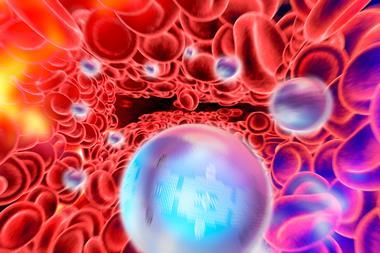Molecules combining electrons and positrons have been made for the first time
Molecules combining electrons and positrons - matter and antimatter - have been made for the first time by US scientists, potentially paving the way for powerful new lasers.
David Cassidy and Allen Mills, of the University of California, Riverside, successfully combined two atoms of positronium - which consist of an electron and its antiparticle, the positron - to make dipositronium molecules.
When a particle of matter meets its antiparticle, they tend to annihilate each other in a flash of energy. But in positronium ’atoms’ the electron and positron spin around each other rather than annihilating - for a few hundred nanoseconds, at least.
The atoms aren’t only unusual because they contain antimatter - they also have no nucleus. ’These atoms are a big quantum fuzz, with the two particles just spinning around each other,’ Cassidy told Chemistry World. ’The centre of mass of the atom is just that - there’s no proton-like particle in a nucleus.’
The team made the molecules by firing intense bursts of positrons at porous silica. The positronium atoms collect in the pores, where the dipositronium forms on the pore surface. ’We use silicon because it’s a good positronium source, and is easy to make with different pore structures,’ said Cassidy. ’If you take care with how you make it, the pores can be very clean, so the positronium has few disastrous interactions [with impurities].’
The team’s ultimate goal is to make an annihilation gamma-ray laser, which requires large numbers of positronium atoms. The team say that, using a more intense positron source, they expect to reach positronium densities at which many thousands of atoms interact and condense into a stable, zero momentum state. Annihilating such a large number of atoms would give a very powerful laser beam.
’These lasers could be used for anything requiring a large amount of energy in a small spot, including military uses’ said Cassidy. ’You could also potentially use it to initiate fusion reactions - the National Ignition Facility at the Lawrence Livermore National Laboratory uses many large conventional lasers, which are huge beasts. It would be much more efficient to replace these separate beams with a single gamma-ray laser beam.’
But in the short term, the quarter of a nanosecond lifetime of the molecules when trapped in silica is long enough to start answering some of the questions about the chemistry of matter and antimatter, said Clifford Surko, who studies positrons at University of California, San Diego. ’Now we can look at how the atoms bind, and measure the binding energy,’ Surko told Chemistry World. ’The more you understand the chemistry, the more you can manipulate it for practical uses.’
James Mitchell Crow
Enjoy this story? Spread the word using the ’tools’ menu on the left.
References
DB Cassidy and AP Mills, Nature, 2007 (DOI: 10.1038/nature06094)






No comments yet